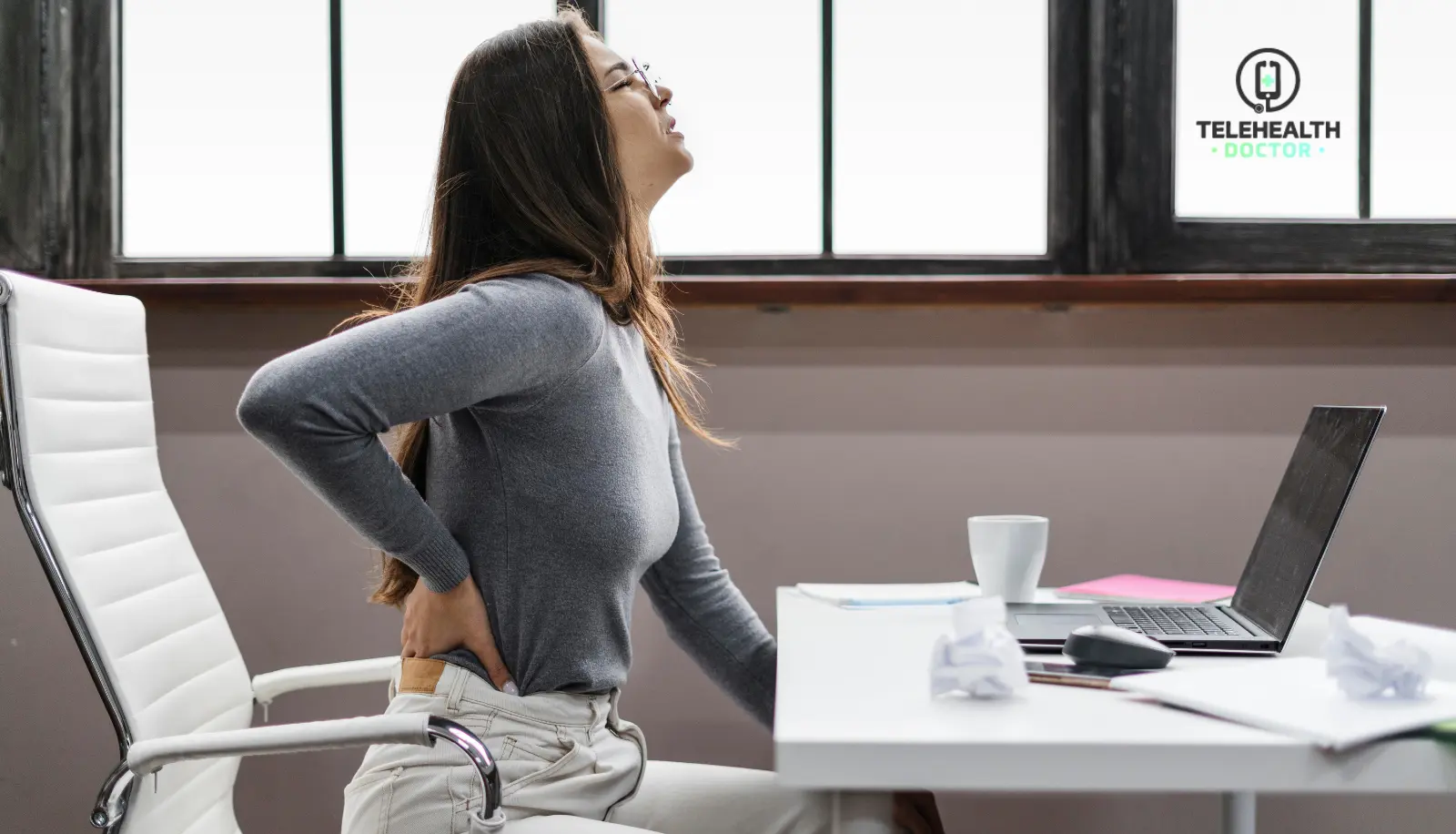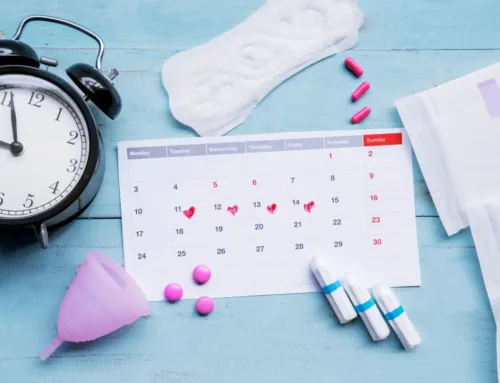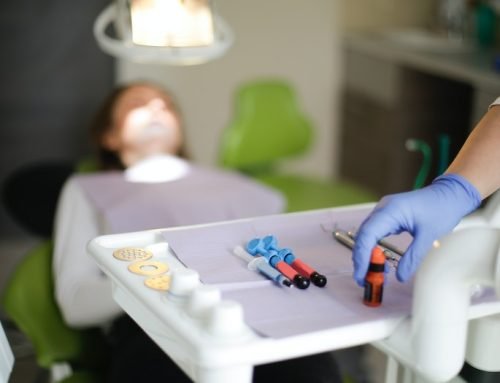Lower back pain is a common issue affecting men and women worldwide. But do you know its ratio is more prevalent in women than men? According to “Physiopedia,” 80% of the global population develops back pain at any age. In comparison, women have 20% more chances to experience back pain due to their biological structure, hormones, and pregnancy period. Let’s delve into the lower back pain causes, symptoms, and treatments in females.
Lower Back Pain Causes in Females
Most of the women experience lower left back pain or back pain in the right side or over all during their 50s or after pregnancy period. The reasons why women are more prone to developing back pain are
- Endometriosis
- Ovarian cysts
- Piriformis syndrome
- Pregnancy
- Sacroiliac joint dysfunction
- Dysmenorrhea
- Spinal Osteoarthritis
- Degenerative spondylolisthesis
- Coccydynia
- Fibroids
Let’s discuss these lower back pain causes in detail
Endometriosis
Endometriosis is a reason for the female lower back pain. It occurs when uterus tissues grow outside the uterus to the ovaries, fallopian tubes, and pelvis lining. Sometimes, endometrial tissue growth also reaches the urinary tract. Endometriosis causes sharp, stabbing pain in lower right side of back female, or on the lower left side of the female. It is accompanied by painful menstrual cramps, pain during or after intercourse, and digestive issues.
Ovarian Cysts
Cysts are fluid-filled sacs that are present in the ovaries. They may be present in one or both ovaries and developed due to hormonal fluctuations, genetic problems, or blockage in the ovarian ducts in females. These cysts may be small or large and cause lower left back pain or lower back right pain in females. T
Piriformis syndrome
A large involuntary muscle deep in the hips is known as the piriformis muscle. Any sharp stabbing pain that originates from the buttock area and spreads to the lower back is piriformis syndrome. Hormonal changes and structural changes in the pelvis during pregnancy are the main causes of piriformis syndrome and lead to lower back pain. Some other symptoms of this syndrome are
- Severe pain in the hip during walk or hip movement
- Sharp pain that circulates in your back, thigh, and leg
- Lower left back pain or lower right back pain
- Inability to sit for a long time
Pregnancy
Most pregnant women experience back pain. The reason is the baby’s weight. Especially in the last trimester, when the fetus is fully grown, the pressure on the spinal muscles increases, leading to back pain. This sharp, stabbing pain in lower right side of the female back can arise on the lower right side. It can be managed by maintaining proper posture, wearing supportive belts, and doing stretching exercises.
Sacroiliac Joint Dysfunction
Those joints that connect the lower part of your spine to your pelvis are called Sacroiliac joints. Any dysfunctionality in these joints can cause back pain. The anatomy of these joints is different in both men and women. Women have a small surface area for SI joints, their pelvis is broader than men, and structural changes during pregnancy and childbirth also affect the alignment of the Sacroiliac joints. All these are possible lower back pain factors caused by the dysfunctionality of SI joints in women.
Dysmenorrhea
Dysmenorrhea is a menstrual pain condition. It is a painful cramp that may occur in the lower abdomen or a sharp, stabbing pain in the lower right side of the back or left side. You can reduce the symptoms of this back pain by placing heating pads or pain relievers.
Spinal Osteoarthritis
Spinal Osteoarthritis occurs due to cartilage breakage of the facet joints, which connect the vertebrates. When cartilage breaks down, bones rub with one another, causing pain. This usually happens in women after menopause due to the decreased level of estrogen, which is necessary for cartilage stability.
Degenerative spondylolisthesis
This is the condition in which cartilage is eliminated between the vertebrates, and one vertebrae slips over the other vertebrae. Prolonged spinal Osteoarthritis leads to degenerative spondylolisthesis. This is also more common among women who are above 50 and have crossed the menopausal phase.
Coccydynia
Pain at the end of the spine (coccyx) is known as coccydynia. It may occur due to structural changes in the pelvis during childbirth. This results in severe female lower back pain and makes women unable to sit for long periods or sit on hard surfaces.
Fibroids
Fibroids are the non-cancerous growth of uterus muscles. They may be small or large and grow along the uterine wall. The causes are considered hormonal changes in women. They cause severe back pain, heavy bleeding during menstruation, pelvic pain, or prolonged menstruation than average time in females.
Lower Back Pain Symptoms
No matter what the cause is, lower back pain symptoms are the same.
- You feel stress in your back and feel an urge to relax and stretch your back muscles.
- Feel sharp pain while sitting for prolonged times.
- You feel it difficult to straighten up from the sitting position or to stand for a long time.
- Problem in bending
- Sudden muscle spasms, uncontrolled and sudden contraction of muscles which make it hard to walk, sit, or change your position
Home Remedies for Back Pain
Sharp, stabbing pain in the lower right side of the back female or left side may be due to premenstrual time or tiredness due to workload. Such types of lower back pain symptoms can be treated at home with the following home remedies
- Use heating pads
- Take rest
- Light exercises, yoga, and stretching
- Take pain relievers
- Apply the RICE rule that says’ rest, ice, compression, and elevation
By following these home remedies, you will feel better.
When to See A Doctor?
If your lower back pain symptoms persist even with home remedies for more than three months and you also observe symptoms such as weight loss, irregular bowel movements, bleeding, spotting, or weakness, then it’s time to visit the doctor.
Don’t you have time for a physical visit to the doctor? No worries. You can book an online consultation with a doctor from “telehealth.” Aphra (Australian Health Practitioner Regulation Agency) registered doctors are available one click away from you. No more waiting queues now. Get an immediate medical consultation from our platform’s registered and experienced practitioner.
Our Words
Women are at greater risk of experiencing lower back pain during their life cycle, especially after pregnancy, childbirth, and menopause. Therefore, they should develop healthy eating habits, maintain a healthy lifestyle, and include moderate exercise and stretching to reduce the risk factors for back pain.
Frequently Asked Questions
Why Women are at higher risk of lower back pain?
Women are 20% more at risk of back lower pain. The reason is they are indulged in regular repetitive home chores, they experience changes in the hormones at various stages of their lives such as pregnancy and menstruation, they undergo structural changes in pelvic spines during childbirth, which losses their cartilage and cause different conditions which are the root cause of severe back pain in females.
What are the Possible ways to detect the reason for back pain in females?
MRI, CT Scan, physical examination, urine test, and ultrasounds are the ways to detect the root cause of back pain in females. Doctors prescribe the tests after analyzing the other symptoms.




Leave A Comment